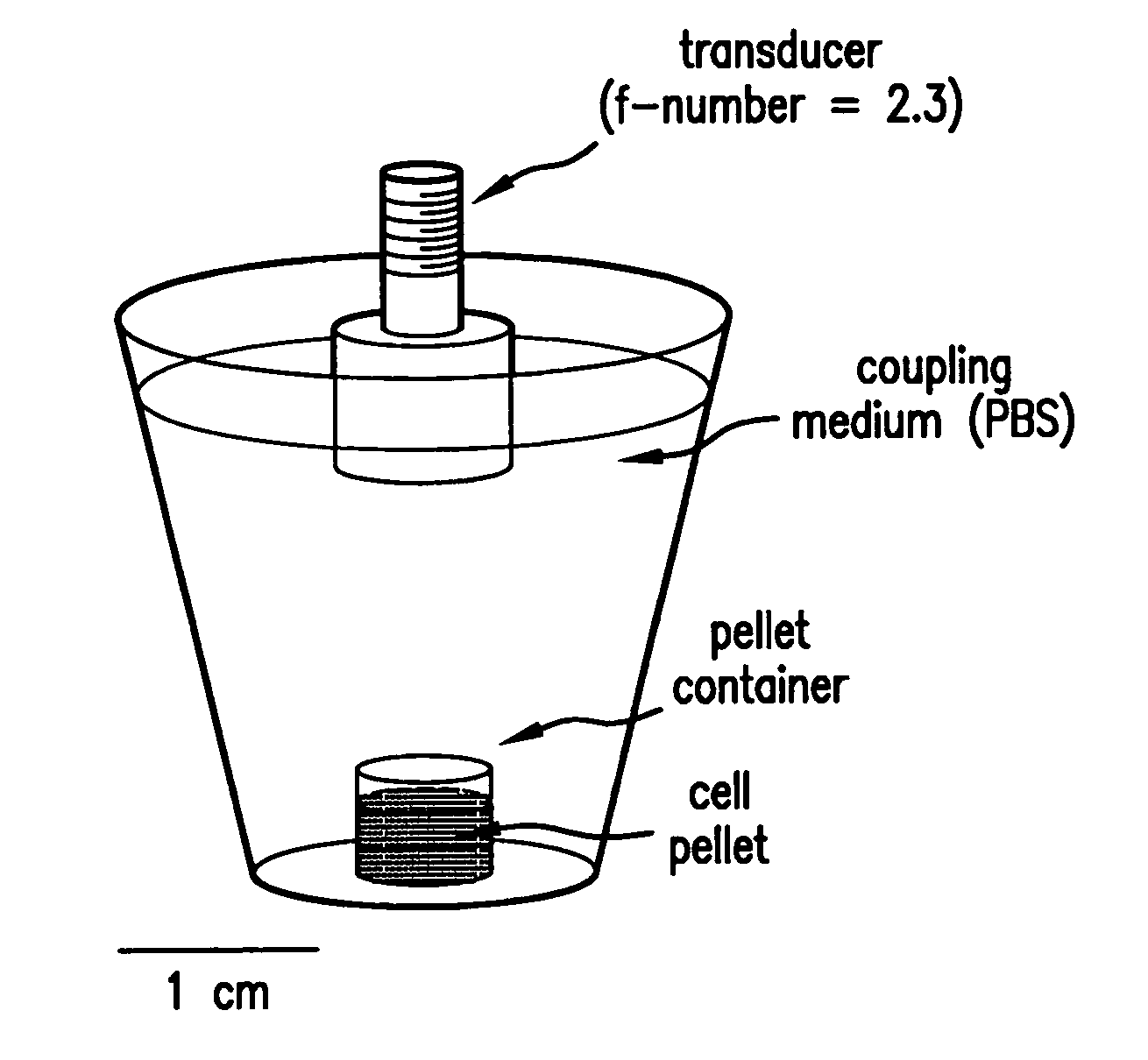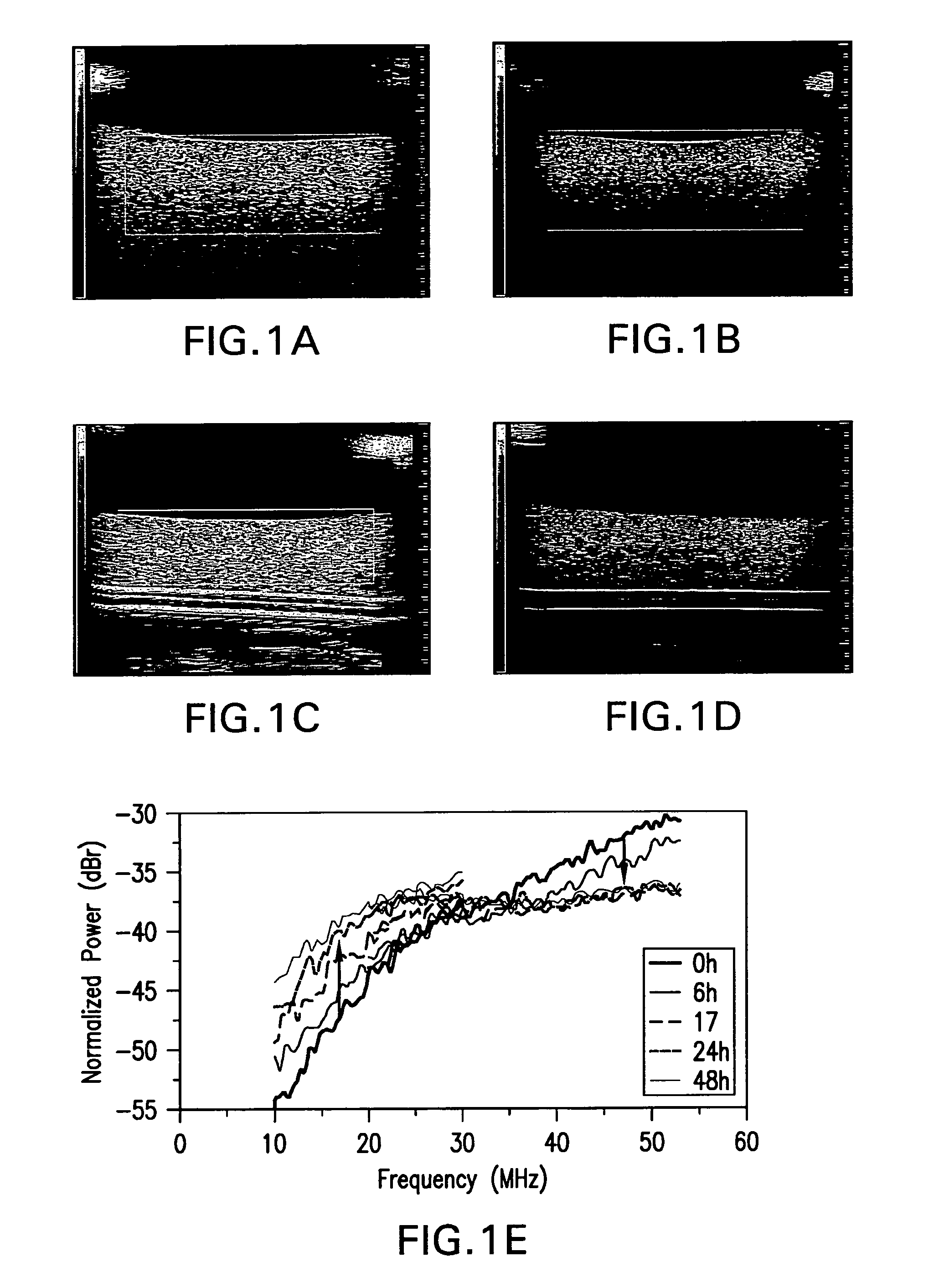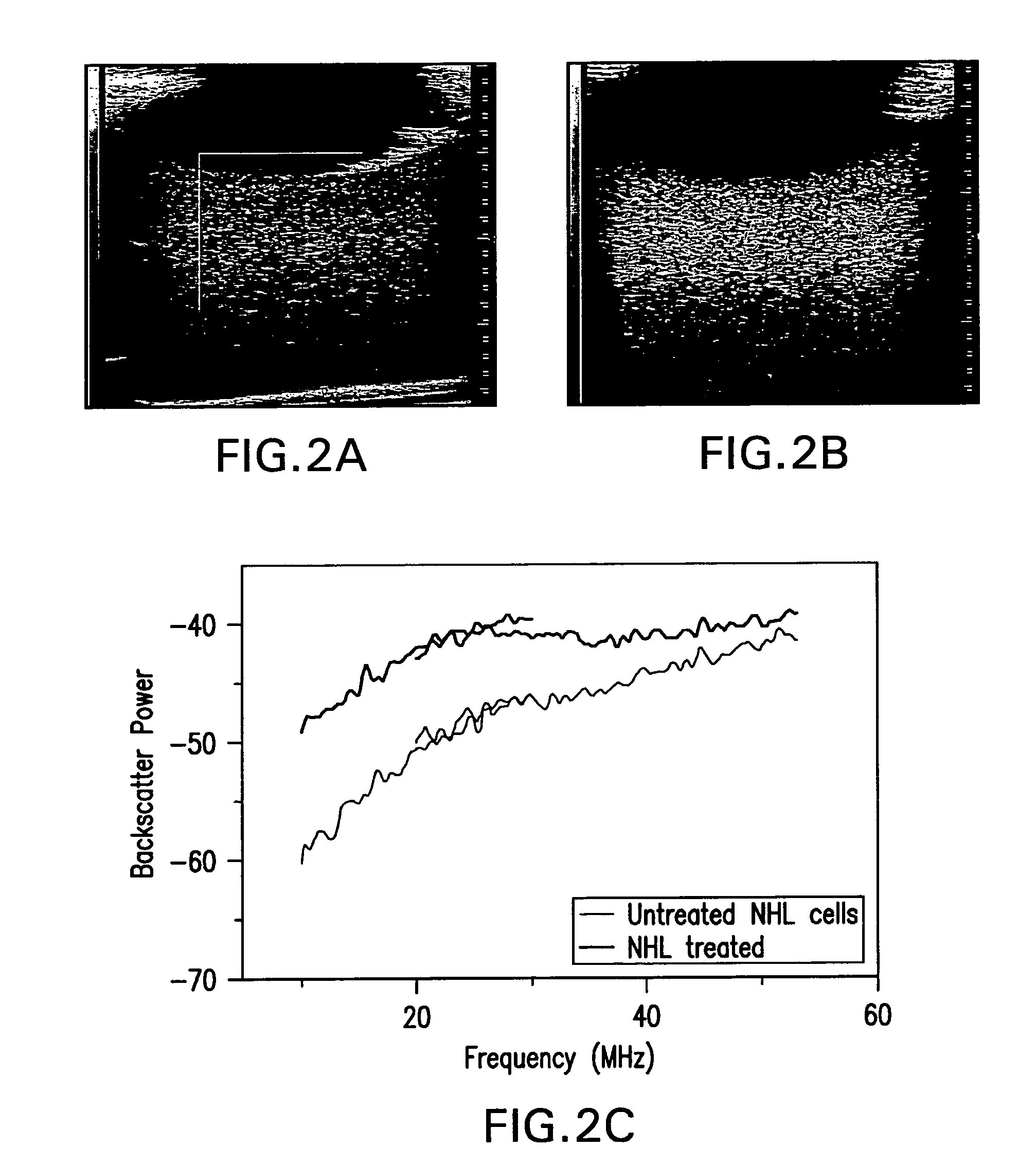Methods of monitoring cellular death using low frequency ultrasound
a low-frequency ultrasound and cellular death technology, applied in ultrasonic/sonic/infrasonic diagnostics, applications, therapy, etc., can solve the problems of time-consuming and inconvenient monitoring, and the methods are not only invasiv
- Summary
- Abstract
- Description
- Claims
- Application Information
AI Technical Summary
Problems solved by technology
Method used
Image
Examples
example 1
[0123]A backscatter signal can be composed of contributions from many individual scatterers. Each scatterer contributes an amplitude and a phase to the received signal. This can be modeled by equation 1 (Raju and Srinivasan, 2002):
[0124]rⅇjΨ=∑i=1nriⅇjθi.(1)
[0125]The amplitude and the phase (ri and θi) contribution from each scatterer can be determined by its position, size and acoustic properties. As there can be a statistical distribution of these properties, the amplitude and phase (r and Ψ) of the received signal can also have a probability distribution. Numerous probability density functions (PDFs) have been proposed to describe the statistics of ultrasonic backscatter (Dutt and Greenleaf, 1994; Narayanan et al., 1994; Shankar et al., 1996; Raju and Srinivasan, 2002). Two of these distributions, the Rayleigh distribution (Strutt, 1880) and the generalized gamma (GG) distribution (Stacy, 1962) can be used in the described methods.
[0126]The Rayleigh PDF, often used as a simpli...
example 2
[0130]The response of the HEP-2 cell line (a Human Caucasian larynx carcinoma cell line) to the chemotherapeutic drug camptothesin, shown to induce apoptosis in this cell-line was determined.
[0131]HEP-2 cell death induction: For the induction of apoptosis, cells were incubated at 37° C. and 5.0% CO2 in 30 μg / mL of camptothecin for various timepoints up to 48 hrs. Pipetting an appropriate amount of the reagent and dissolving it in MEM with 0.1% gentamycin prepared the camptothecin solution. The camptothecin solution was prepared fresh for each experiment. After the treatment, cells were washed with phosphate buffered saline (PBS) and detached using trypsin. These were then pelleted in flatbottom cryotubes at 1500 g on a desktop swinging bucket centrifuge with a diameter and height of approximately 1 cm. Pellets were imaged with a 20 or 40 MHz transducer, and RF data were collected.
[0132]FIG. 1 shows exposure of HEP2 cells to the chemotherapeutic camptothesin. Pellets of unexposed cel...
example 3
[0133]The response of NHL cells (Non-Hodgkins Lymphoma, human B cell lymphoma established from the pleural effusion of a 46-year-old woman with nodular histiocytic lymphoma) to CHOP chemotherapy are demonstrated, both in-vitro (Daunorubicin 0.012 mM, Cyclophosphamide 0.35 mM, Vincristine 0.2 nM, Prednisone 0.037 mM) and in-vivo in an animal model (table 4.1).
[0134]NHL cell death induction: Non-Hodgkin's Lymphoma cells (CRL2261, American Tissue Culture Collection) were cultured, then a concentration of 106 cells in 50 μl of media was injected intra-dermally into the left hind leg of severe combined immunodeficiency disease (SCID) mice, or were grown to form pellets. Primary tumors were allowed to develop for approximately 4 weeks, until they reached a diameter of 8-10 mm. The mice / cells were treated with the CHOP chemotherapy regimen, as is used clinically to treat aggressive NHL. In this regimen four drugs (Cyclophosphamide, Hydroxydoxorubicin, Vincristine (Oncovin) and Prednisone) ...
PUM
 Login to View More
Login to View More Abstract
Description
Claims
Application Information
 Login to View More
Login to View More - R&D
- Intellectual Property
- Life Sciences
- Materials
- Tech Scout
- Unparalleled Data Quality
- Higher Quality Content
- 60% Fewer Hallucinations
Browse by: Latest US Patents, China's latest patents, Technical Efficacy Thesaurus, Application Domain, Technology Topic, Popular Technical Reports.
© 2025 PatSnap. All rights reserved.Legal|Privacy policy|Modern Slavery Act Transparency Statement|Sitemap|About US| Contact US: help@patsnap.com



